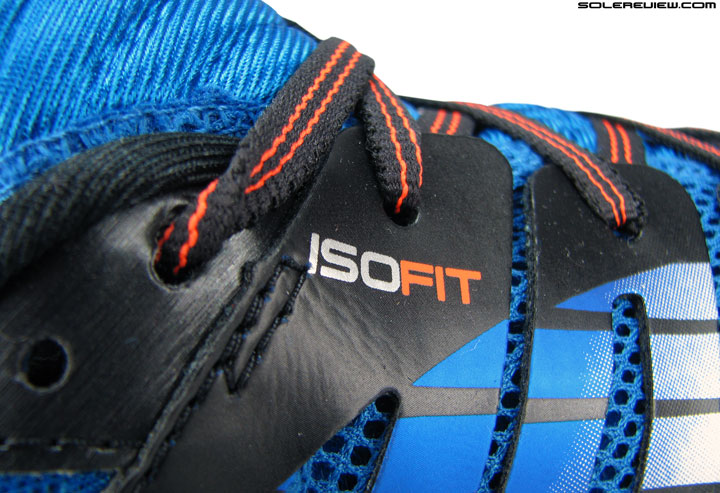
Last year, Saucony moved two of its existing premium models – the Triumph and Hurricane to the ISOFIT upper platform, in addition to the then new Zealot.
These are busy times for Saucony. In just under a year, it has reworked its upper design to accommodate the new ISOFIT clutching system, and changed its cushioning tech not once but twice.
The higher priced offerings like the Triumph and Hurricane transitioned from the Powergrid foam insert to a ‘faux’ Powergrid+ last year. And late 2015 brought in the newest ‘Everun’ concept, a cushioning material very similar to the adidas Boost.
Even by fast changing industry standards, it is unusual to see the Powergrid+ retired so soon, at least from a marketing standpoint. We weren’t impressed at all with its debut last year, and we actually used the word ‘lame’ to describe it. The Powergrid+ isn’t gone, however. It is still part of the new Triumph ISO, just that it isn’t a marketing darling anymore. On the Triumph ISO 2, it hides in plain sight.
Our guess is that Saucony’s Everun was supposed to be released last year but the brand wasn’t ready to commercialize it. So they dressed up molded Powergrid+ as the back-up tech, cooked up some clever marketing story (20% more cushioning?) and went with it till the Everun train pulled into the station.
And what is the Everun anyway, and how is it different from the adidas Boost foam?
The basic premise is the same as the adidas Boost, the latter being a midsole cushioning tech leased from BASF (the chemical company). In short, a cluster of springy urethane granules are bonded together, and placed between the upper and the outsole.
That being common, there are a couple of differences worthy of note. The first relates to the foam volume, and the second part pertains to its placement strategy.
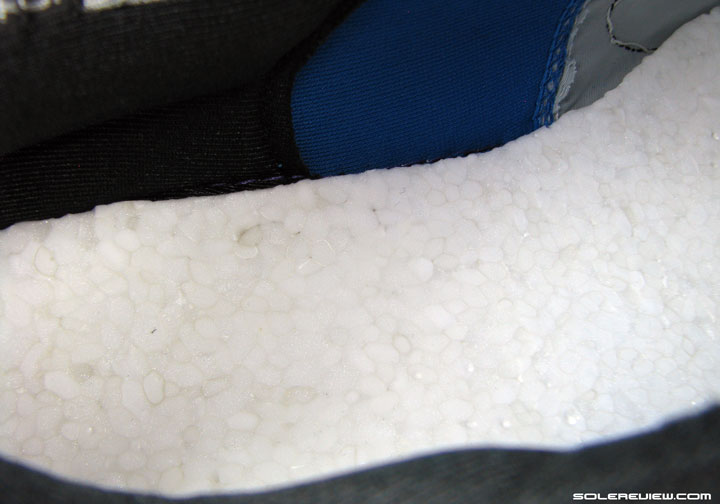
Lift the insole, and you’ll be greeted with this. A sliced sheet of granular, co-molded urethane foam.
Unlike adidas, where the Boost foam forms the majority of the midsole, Saucony restricts the use of Everun to only a few areas. On their higher priced models such as the Triumph ISO 2, the new material is placed in two places.
Lift the primary insole, and you’ll see the Everun sheet acting as a secondary insole. Saucony calls this a ‘top sole’, and on lower rung models such as the Guide 9 (and likely the Ride 9), the insole bedding is all the Everun the shoe will ever get.
Packing cushioning tech inside the insole isn’t new. adidas has done it a few times; remember the 2008 Megabounce’s swappable insole or the adidas Predator or F5- Tunit football/soccer boots with the ‘Power swerve’ weight balanced sockliner?
And so has Nike. They used to glue a compressed airbag with the insole back in the 90’s, a design which they aptly christened the ‘Airliner’. Cheesy, but true.
Even the skateboarding brand Vans does it, adding polyurethane tech to some of their skate shoe insoles. And even the Converse Jack Purcell too, with its Nike Zoom Air embedded insole. So you get the drift – this has been around in many avatars.
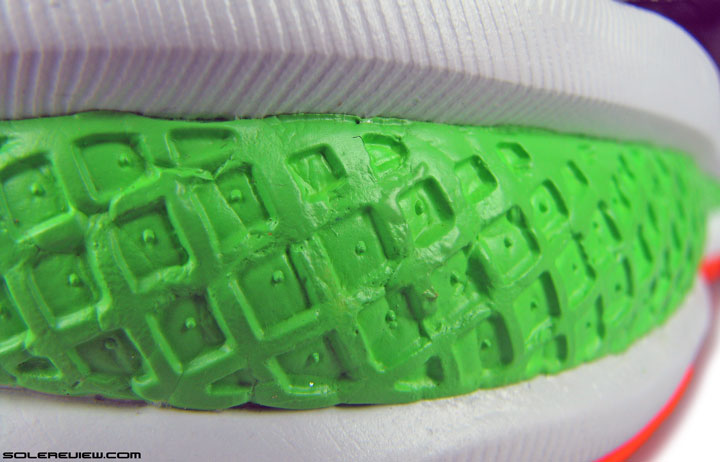
Saucony has molded the urethane wedge into a waffle texture. The result makes it different from adidas’s version, yet the finishing doesn’t look all that great.
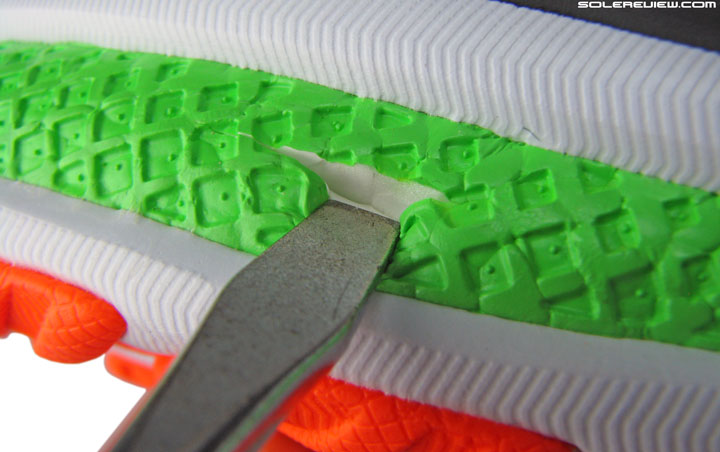
Does this expanded urethane compound only come in white? Seems so, since Saucony has gone through the pains of painting it over.
The second Everun foam placement happens to be under the heel, lateral (outer) side to be exact. This is where the SRC crash pad used to call its home once, except that the Everun crash pad is comparatively smaller in size and sandwiched between firmer EVA foam layers.
Interestingly, Saucony does two things differently than adidas here. One, it has managed to compression mold the Everun wedge with a waffle shaped texture, and secondly, the section is coated over with an eye-catching bright green paint. Slit the crash pad open, and you’ll see the whites inside. Here, we’ll do the honors. (see picture above).
The end result of molding granular foam isn’t very pretty despite Saucony’s best intentions. If you look at the ultra-zoomed in picture here, you’ll observe that the crash pad ends up lacking a consistent texture, a sight which reminds us of a chocolate bar having been in the sun too long.
Maybe a year ago, we would have said that the Everun was unoriginal and an unapologetic copy of adidas Boost, but really, who cares? Besides, Boost isn’t proprietary adidas. It is cooked in BASF’s labs, not adidas’s, so like any other material it is going to get around. Like engineered mesh or co-molded midsoles, for instance.

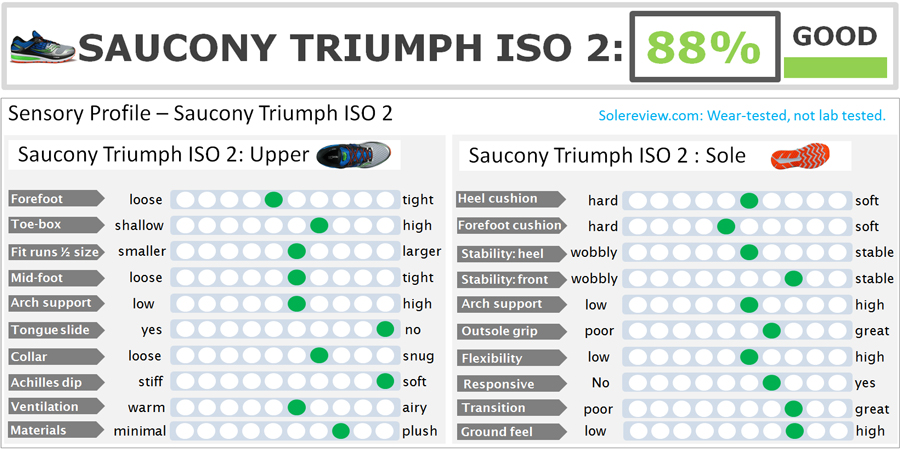
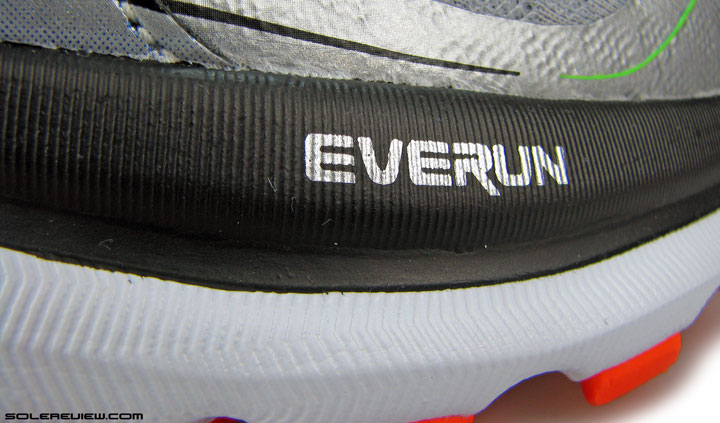
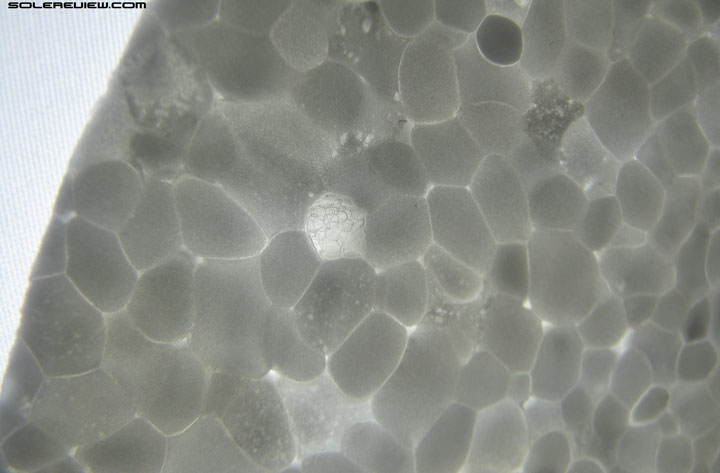
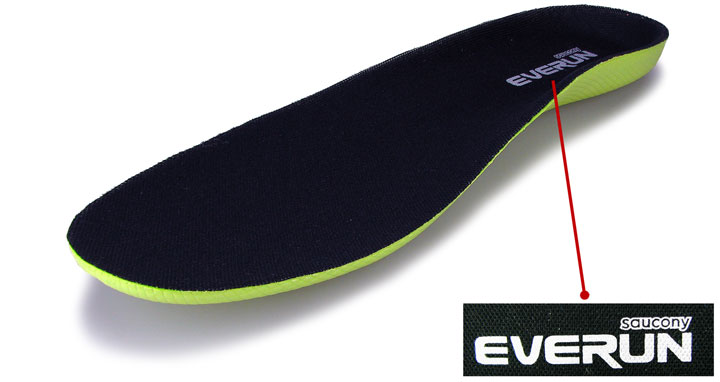

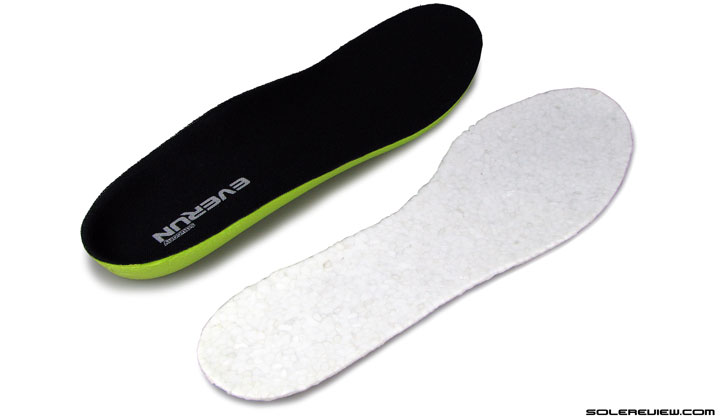
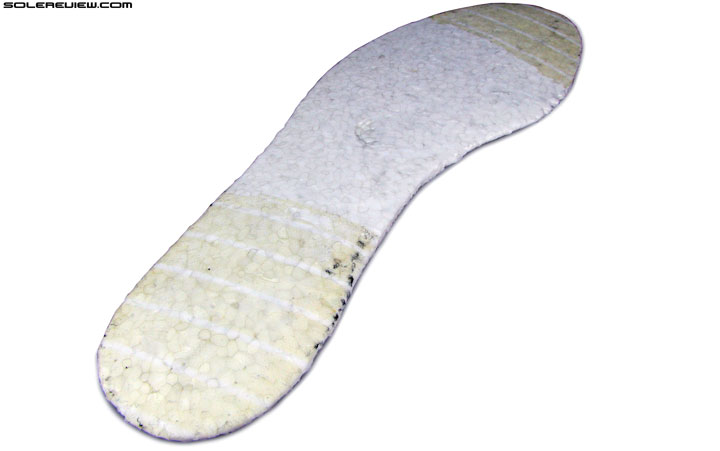
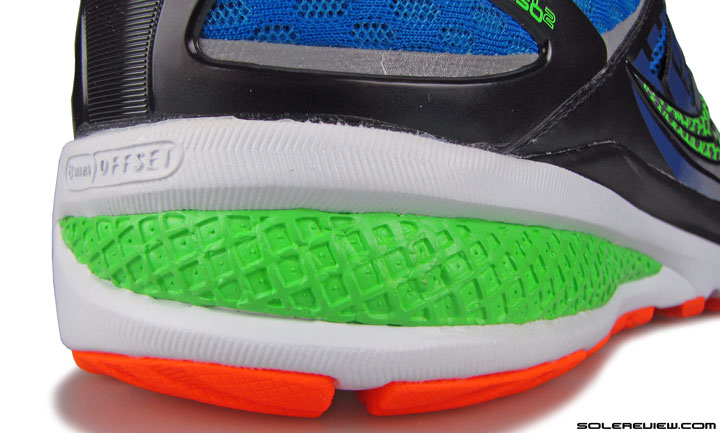
23 comments
I´m just at page 1 of the review but want to say: “Happy new year :)” to you! I wish you all the best for 2016 and may you be able to continue your great work!
Thank you so much! Have a wonderful new year!
A lot of people say the ISO 1 was better. If this is firmer then I would tend to agree since it’s basically the same shoe with different tech. Saucony, stick to your guns already. Bring the old school raquet grid back please.
People who like a softer ride will find the ISO 1 better for sure.
Having ran a lot in the first Triumph ISO I was looking forward to the release of the ISO 2. As soon as my local running store had them I purchased a new pair only to be disappointed by the firmer ride. While the upper on the ISO 2 is an improvement, the ride for me was a let down. Some are going to like the more responsive ride, especially those who’ve never ran in the original. I think many who were so pleased with the original (myself included) are going to be put off by the change in the ride. I can definitely tell a difference in the ride. To me it’s not near as forgiving. And for some reason my feet go numb while running in these. I’ll never understand running shoe companies. Saucony already had shoes you could buy for responsiveness, why not just let the Triumph be their soft, highly cushioned shoe for those of us who like that feel?
Thank you for the feedback, Mark. Runners will be divided on the ISO 2 for sure; softness vs. responsiveness. And agree, the Ride is more softer than the Triumph, an aspect we called out in our Triumph review last year.
Why exactly would you get your hands on boost foam and water it down like this? The stuff is amazing when used properly.
Beats us. Budget issues? Saucony is part of a smaller parent company.
I enjoyed the Triumph ISO 1 for close to 300 miles, and purchased the ISO 2 as soon as it came out. I enjoy roomy toe boxes, being an almost but not quite wide footed individual. With the ISO 2, it always felt “less roomy” in the toe box than the ISO 1, but figured it was just the new vs. worn down feeling. Got about 10 training runs in the 2’s and used them for a half ironman. First black toenail in 2 years. I don’t want to blame the toenail on the shoe, but it seems the common opinion is that black toe nail equates directly to lack of space up front (?). I have moved up a half size and this seems to provide more adequate room, but now the upper bunches on me when laces are tied :(.
As for the way they feel to me, definitely firmer. I don’t relate firm to bad; however, for the first couple of miles my feet feel “tired”, after a couple of miles I loose that feeling and I’m apparently good for as many miles as I want to put in.
I’m currently battling some tendinitis, apparently from to quick of an increase in miles, but have wondered about finding a bit more stability in otherwise neutral shoes. I have had the chance to try on the Transcend 3, and was pleasantly surprised with what seems like quite a roomy toe box. I think I will give those a try. Any other suggestions with regard to more stability, toe box roominess, and cushioned long mileage shoes are very welcomed. The doctor I’m seeing for the tendinitis has the opinion that I’m on the correct (neutral) type of shoe; the finding a bit more stability is of my own creation.
Appreciate your detailed insight, Paul. We find it interesting that your comment mentions the ISO 2 to have a smaller toe-box, we thought the reverse to be true! Just shows how feedback varies depending on the individual.
We haven’t tried the Brooks Transcend 3, but your comment about its roomy toe-box has piqued our interest. We found the Transcend 1 and 2 to have a tight upper.
As regards to your requirement for stable shoes with a roomy toe-box, we would recommend the Mizuno Wave Inspire 11 or 12, Mizuno Wave Rider 19 (neutral but stable), the Hoka One One Constant and finally the Nike Air Zoom Odyssey.
curious… the everun insole plus some thin insole (the first one that comes to mind is the adiZero insoles)… can that combo replace a traditional insole of a shoe that lacks some ooomphh in the cushioning department?
As a first layer of cushioning under the foot, the Triumph ISO 2 scores well over traditional insoles.
The comments/Q&A thread will be closed till January 17, 2016. Any inconvenience is regretted. Premium access members can continue to use their dedicated comment section, which will be open.
I recently began running a year ago (28 yrs old). I’ve ran one marathon, and six half marathons. In training for six back to back half marathons, I developed a stress fracture of my inferior pubic ramus. My last half marathon I finished at 1:29 (PR). I have about six-eight weeks of recovery at the moment, and have been trying to do research on whether or not the stress fracture may have been in any way related to the shoes I was training in. Leading up to the stress fracture I jumped from a four day a week running plan to a six day a week plan. Five days consisted of running in the Adidas energy boost. One day a week would be a speed run in the Adidas adios boost 2 or 3 and I was racing in the Adios Boost 2 & 3. Mentally, the stress fracture is challenging. It is hard to know exactly what aided in the cause of the fracture. Could the shoes have been an issue? Upon recovery I was interested in swapping possibly away from Adidas and into something else, but not sure if this would help prevent the issue moving into the future. I think the rapid increase in running and pace caused the fracture, and back to back races…. but is there any recommendation you have as far as the shoes? Are minimalist shoes better at avoiding stress fractures? The research is mixed. Would it be safe or recommended to move to a different shoe? Any suggestions? Thanks.
It is just our opinion, but we think the likely cause to be the accelerated rate of training/mileage.
The research is mixed because there is no conclusive evidence that a softer (or for that matter a harder) shoe decreases or increases impact forces in isolation.
If you want to feel reassured with regards to your footwear choice, then perhaps a Hoka One One (Clifton, Bondi 4) could be an option. It is unlikely that they will reduce the impact forces, but they might end up feeling more comfortable over greater distance.
Thanks for the reply. I believe my main concern was how legit the research was regarding min vs. Max in relation to impact forces on bone vs. muscle/tendon. From what I’ve been able to find it’s pretty much as you’ve said. When I’m able to get back into the training I may try the Cliftons out. Attempting to break into the 5 minute pace mark for a full marathon, but recurrence of stress factor of course a worry and making sure all bases are covered. I also feel the fx was a result of rapid increase in training and pace and not the shoes. Thanks for the awesome reliable reviews and the reply.
All research has a rationale, but there are just too many variables involved to have a consistent set of control conditions. Hence the mixed findings.
Recover soon, and would to hear what eventually worked for you comfort-wise!
Seem to be recovering on time. Hopefully only a week or two to go. Went to try on the Clifton’s per the recommendation. Actually enjoyed the feel of the Clifton 2, but torn between those and the Hoka Vanquish 2. A little heavier, but appear to have great responsiveness (not able to test on treadmill yet). Would love to know if you were planning on reviewing those in the near future, or if you had any early impressions. With the Hoka Tracer coming out soon, I may just make the brand swap to Hoka and hope for the best
Thank you for sharing your feedback.
The Vanquish 2? No miles in them, and unfortunately no plans to review them.
(its kind of general question) Let me start with obvious thing, your reviews are awesome! :)
My question is, do you consider price while reviewing shoes? Like, $120 Ride 7 is rated a lot higher than $160 Triumph ISO 2, in your opinion, is Ride 7 better shoe than ISO 2 or your rating is relative based on their price?
In other words, if ISO 2 was $120, would you still rate it lower than Ride 7?
Correct, there is some price weightage, but not significant. Primary considerations are fit, stability and transition quality. The Ride 7 is a better shoe than the ISO.
Great, thanks!
It will be interesting if you review cheaper shoes, like $60 Saucony Cohesion 8, 9. Saw some good reviews for it in other sites.
Thanks for the suggestion. But it is unlikely we’ll be reviewing them – no budget.
Comments are closed.